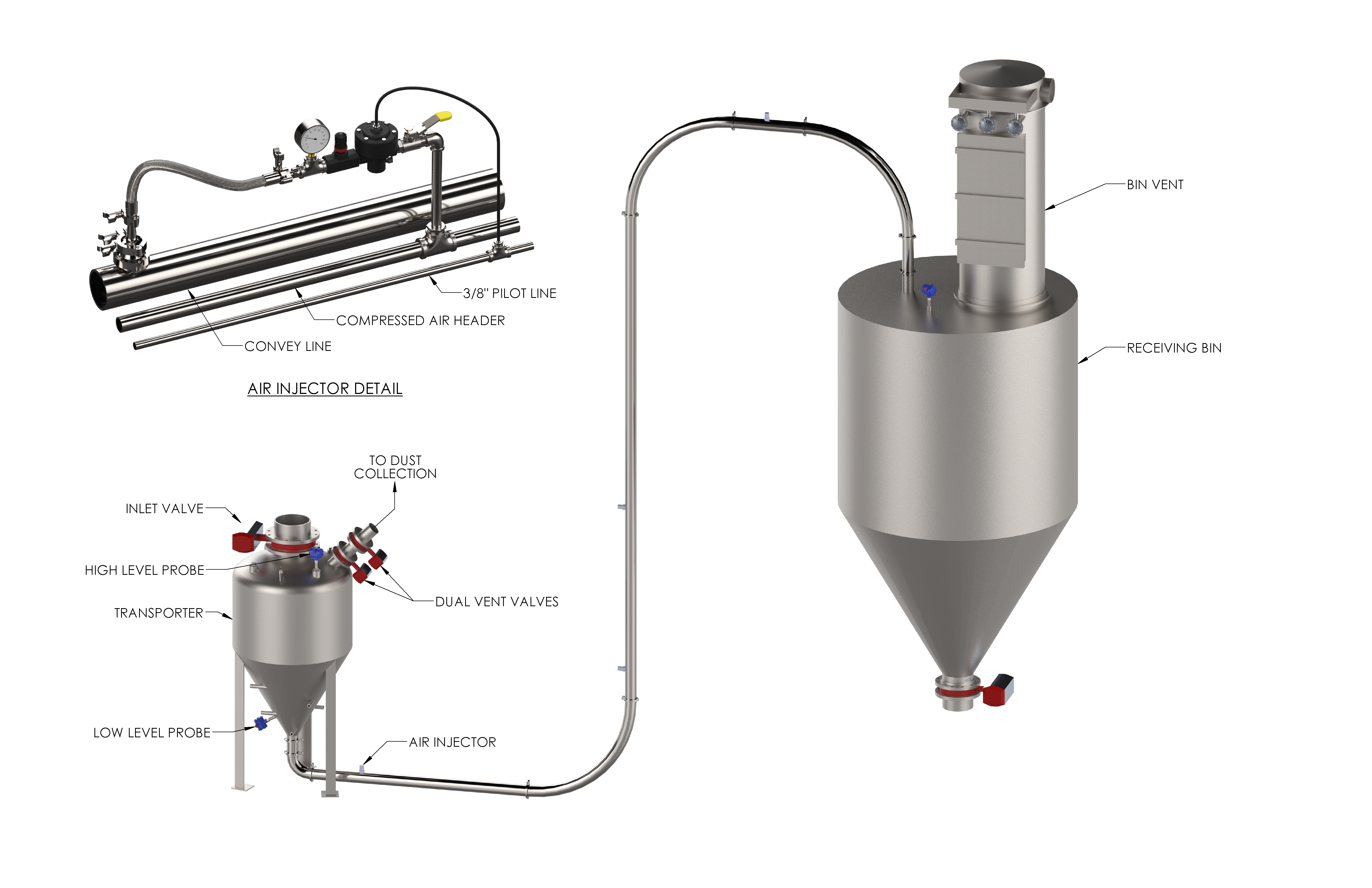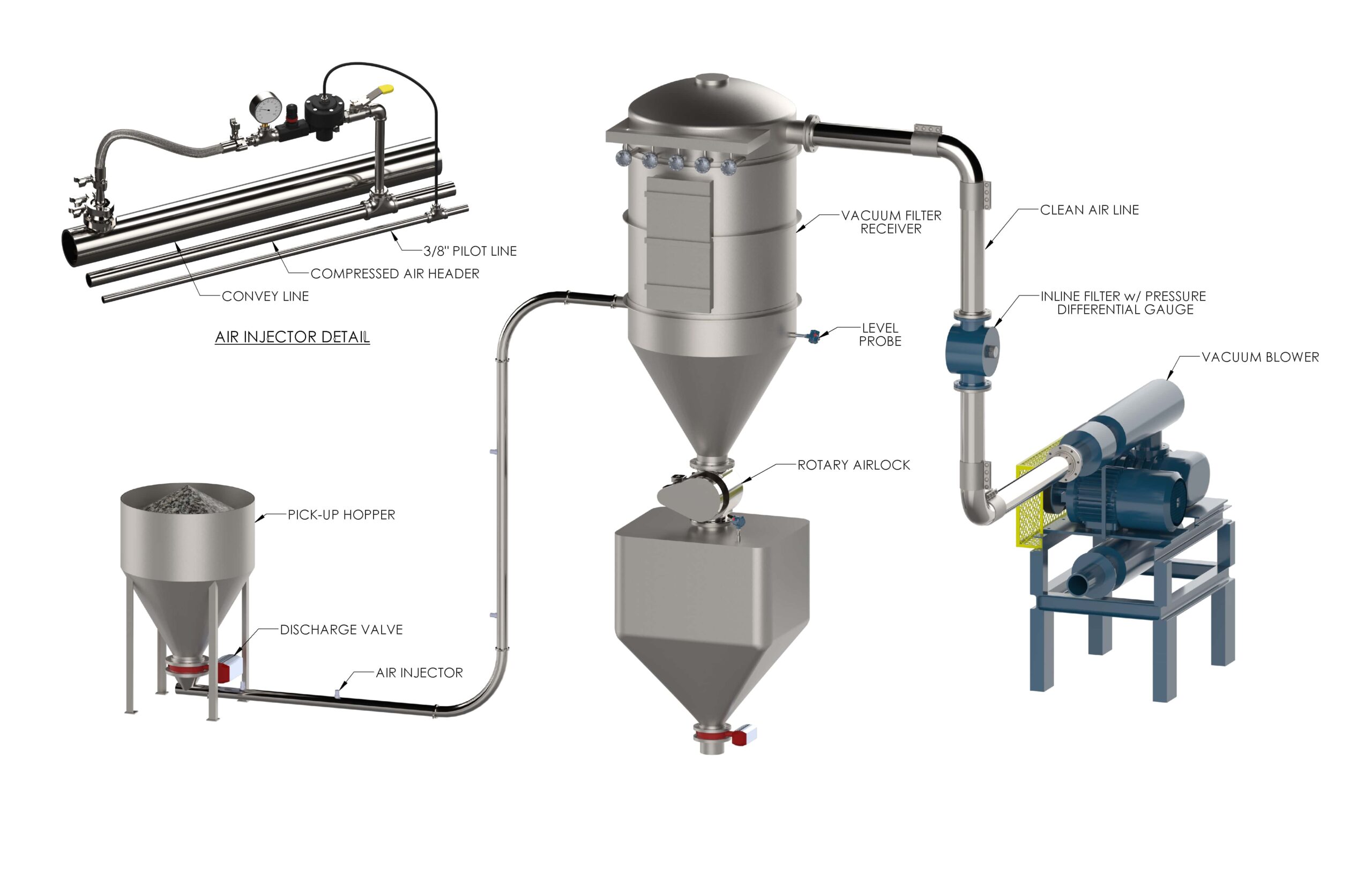Pneumatic Conveying Systems
While the laws of physics are well defined for pipe flow with regard to water and other non-compressible fluids, the calculations for conveying material within a gas stream which is compressible are much more complicated. For this reason, the “art’ of pneumatic conveying has many challenges that can only be established with previous experience and pilot testing.

Dilute Phase Pneumatic Conveying
A dilute phase pneumatic conveying system utilizes low pressure (less than 15 psi), high volume gas to entrain the materials in the gas stream and deliver products in an enclosed pipe from point A to point B in your process. The function of dilute phase conveying relies on velocity to keep the conveyed materials above their respective saltation velocity (3,000 – 7,000 fpm)
Dilute phase can be either vacuum or pressure depending upon the process. Dilute phase is typically used for materials that are non-abrasive, non-friable and lighter bulk densities that are not significantly affected by high velocities. Materials such as grains, plastic, flour, salt, wood chips, etc… are good candidates for dilute phase conveying systems.
Dilute systems typically require a blower package, airlock style feeder to add material into the convey line, convey line, a filter receiver and controls.

Dense Phase Pneumatic Conveying
A dense phase pneumatic conveying utilizes high pressure (15-100 psi), low volume gas to deliver products in an enclosed pipe with a controlled product velocity from point A to point B in your process. The function of dense phase conveying relies on pressure to push materials through the pipes at average velocities as low as 100 fpm.
Dense phase can be either vacuum or pressure depending upon the process. Dense phase is typically used for materials that are abrasive, friable and heavier bulk densities. It is also a good fit for blends of products where segregation must be avoided. Materials such as sand, abrasive minerals, cement, pelleted product, etc… are good candidates for dense phase conveying systems.

